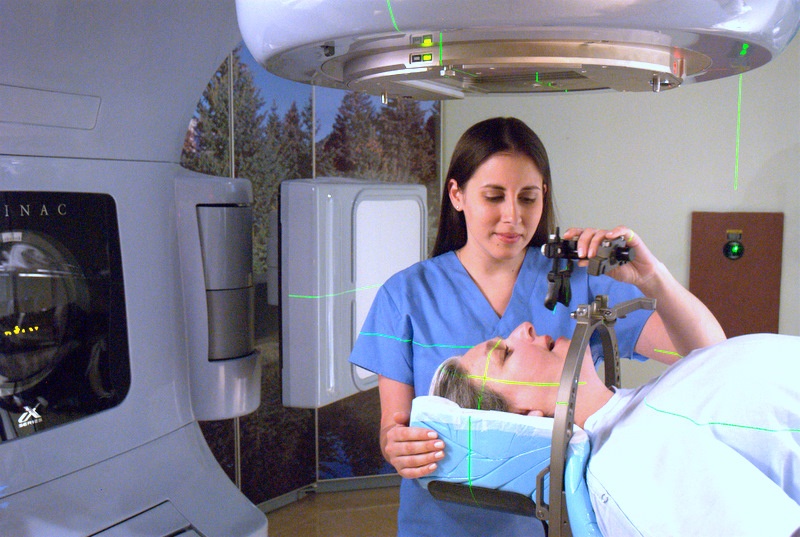Radiosurgery today is better in almost every way than it has ever been before. Generations of equipment and procedural improvements are paying dividends now with better treatment plans, more accurate radiation generation and delivery, more precise beam shape and intensities, better patient immobilization, positioning, and comfort, and many more factors. While these advances have inarguably produced better overall outcomes, there is one factor that rather obliviously resists improvement – and must therefore be eliminated by taking action on other factors. That stubborn factor is, of course, human error.
Despite our best intentions, even well-trained human technicians can occasionally find a way to mis-position the patient or select the wrong beam shape. And every time the wrong treatment is administered, you risk harming your patient. Here are five ways to proactively eliminate human error from radiosurgery treatments:
- High accuracy positioning based on fixed patient geometry
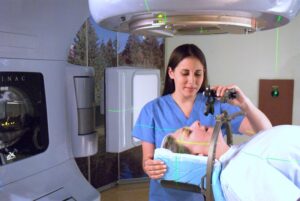 Accurate patient positioning is a critical step in radiotherapy treatments, and treatment of tumors in the head and neck area are particularly sensitive to positioning because of the close proximity of other essential organs and tissues.
Accurate patient positioning is a critical step in radiotherapy treatments, and treatment of tumors in the head and neck area are particularly sensitive to positioning because of the close proximity of other essential organs and tissues.
Today, high-accuracy head immobilization products are available to meet this positioning challenge and eliminate human error. For example, Aktina offers a family of head immobilization products based on a patented fixation method called PinPoint that uses vacuum technology to match a fitted plate to the patient’s upper palate. This approach offers many advantages, but one of the most important is the sub-millimeter accuracy that can be achieved without requiring any action by the patient while offering a firm, fixed positioning reference for technicians.
Click here to see more about the Aktina PinPoint solution.
- Help patients remain still with advanced lateral support
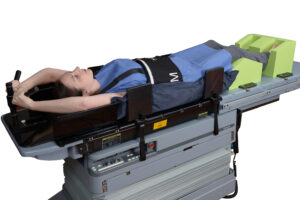 Lengthy setup times and difficult hold positions increase the chances of patient movement and procedural errors during SBRT treatments. In the past, bulky and restrictive components were used to immobilize patients, adding undesirable time and complexity to setups.
Lengthy setup times and difficult hold positions increase the chances of patient movement and procedural errors during SBRT treatments. In the past, bulky and restrictive components were used to immobilize patients, adding undesirable time and complexity to setups.
Today, advanced lateral support systems are available that can cut setup times, increase clinicians’ flexibility, and reduce stress to patients, reducing human errors. Aktina’s Memorial Cradle 2 Lateral Support System, for example, developed in conjunction with Memorial Sloan Kettering Cancer Center, features a unique modular design that provides active patient support by applying lateral side pressure to increase treatment setup accuracy and reproducibility.
Click here to see more about the Aktina Memorial Cradle 2 Lateral Support System.
- Make use of “fool-proof” equipment where possible
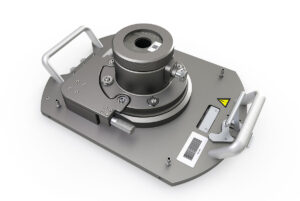 Trained clinicians are not fools, but to eliminate human errors, it always helps to employ equipment with built-in “fool-proof” design features as a double-check. One excellent example of this approach has to do with SRS Cones. In the past, regulators in many states took action to ensure that cones are barcoded and register with the application software to ensure proper radiation dosage delivery. However, even these measures remained vulnerable to human error–once the proper cone is scanned, there was nothing registering whether or not that scanned cone was the same cone that was then attached to the applicator.
Trained clinicians are not fools, but to eliminate human errors, it always helps to employ equipment with built-in “fool-proof” design features as a double-check. One excellent example of this approach has to do with SRS Cones. In the past, regulators in many states took action to ensure that cones are barcoded and register with the application software to ensure proper radiation dosage delivery. However, even these measures remained vulnerable to human error–once the proper cone is scanned, there was nothing registering whether or not that scanned cone was the same cone that was then attached to the applicator.
Aktina offers an interlocking SRS cone system designed to eliminate this type of human error. Aktina interlocking cones have carved channels and grooves that match corresponding channels and grooves carved into the applicator. As each cone is inserted into the applicator, they depress specific switches to confirm that they are the proper size cone for the programmed dosage. The control software, which has been integrated with the cones and applicator, compares the installed cone with the programmed plan and confirms they match before proceeding.
Click here to see more about the Aktina Interlocking Cone System.
- Automate the calibration process
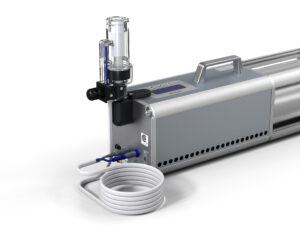 Adjustable equipment requires periodic calibration to ensure treatment accuracy. Some clinicians, however, are still using calibration processes that depend on human actions, and can therefore vary between operators, or even be performed inaccurately. One example of this is the calibration of active breathing coordination systems, or ABCs. The older method for calibrating an ABC system was to use a physical plunger to simulate patient breathing. With this method, however, the rate of plunger movement, which is important to calibration accuracy, is difficult for technicians to control, leading to calibration inaccuracies and to other human errors.
Adjustable equipment requires periodic calibration to ensure treatment accuracy. Some clinicians, however, are still using calibration processes that depend on human actions, and can therefore vary between operators, or even be performed inaccurately. One example of this is the calibration of active breathing coordination systems, or ABCs. The older method for calibrating an ABC system was to use a physical plunger to simulate patient breathing. With this method, however, the rate of plunger movement, which is important to calibration accuracy, is difficult for technicians to control, leading to calibration inaccuracies and to other human errors.
Today, there is an automated option for calibrating ABC systems – called the Spirocheck Duo calibration system from Aktina – that eliminates this human-induced variation. Like the traditional calibration approach, it uses a plunger to deliver a known volume of air to the ABC, but instead of being manually operated, it is powered so that the rate of the air delivery can also be controlled in a repeatable, accurate manner. As a bonus, the entire calibration and operational check takes less than 5 minutes, so the calibration be performed daily at a minimum, and if desired, as often as before each patient.
Click here to see more about the Aktina Spirocheck Duo calibration system.
- Use the latest laser positioning technology
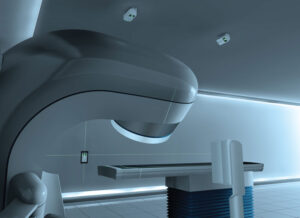 At the end of the day, positioning can only be as accurate as your points of reference. And, variations in human perception and positioning judgment can lead to unwanted positioning errors and variability.
At the end of the day, positioning can only be as accurate as your points of reference. And, variations in human perception and positioning judgment can lead to unwanted positioning errors and variability.
Aktina provides the latest LAP laser positioning guides that transfer the position of fixed room reference points into 3D space, and thereby to the LINAC setup and then to the patient. During setup, calibration, and quality assurance phases, laser reference guides project the LINAC isocenter and reference alignment lines, making these references visible and revealing any discrepancies with the phantom or patient positioning. Using these guides, the patient can be repeatedly and accurately positioned in 3D space and aligned in all three axes, reducing the chances of human error negatively affecting the treatment.
Click here to see more about the LAP Room Laser Systems from Aktina.
Radiosurgery today is better in almost every way than it has ever been before. You can help your well-trained human technicians make sure that every treatment is as accurate as it can be by taking action to eliminate human errors in patient positioning, equipment calibration, and treatment setup.
Aktina is proud to provide the latest, most advanced offerings in support of radiotherapy treatment – creating a win-win situation for treatment providers, patients, and better outcomes. Contact us for more information about how we can improve your radiation treatment workflows.

